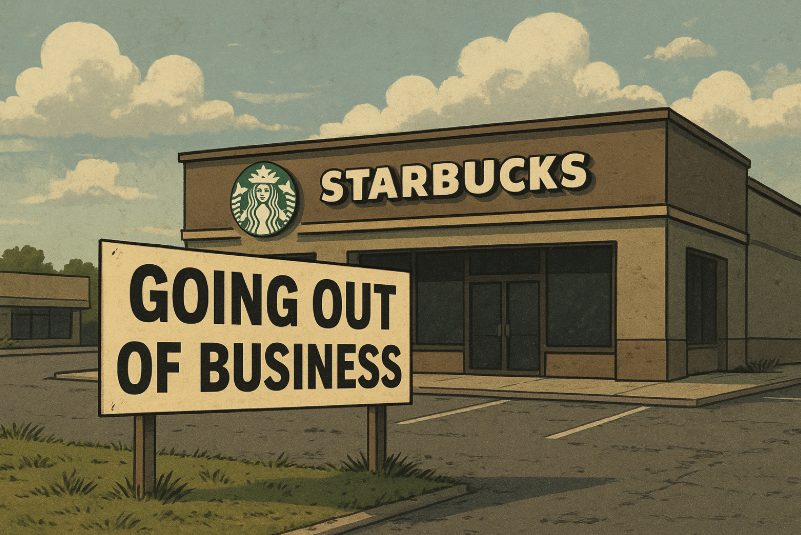Short Answer: No. Starbucks Corporation (SBUX) is not going out of business. It remains the world’s dominant coffee chain, a global powerhouse with a massive footprint that includes over40,000 stores worldwide and a robust market capitalization of nearly $95 billion. In its 2024 fiscal year, the company reported substantial total net revenues of over $36 billion, far outpacing its closest competitors globally.
However, while its status as a behemoth is secure, the company is facing significant operational and financial headwinds in key markets, which has necessitated the most drastic corporate adjustment in recent history.
The perception that the company might be in peril comes from a recent and highly publicized$1 billion restructuring plan announced in September 2025. This plan is a direct response to several quarters of declining sales, contracting profit margins, and lower customer traffic, especially in its core North American and vital Chinese markets.
Key Factors in the $1 Billion Restructuring Plan
The recent actions are the core components of CEO Brian Niccol’s “Back to Starbucks” turnaround strategy. This strategy is firmly aimed at consolidating resources, improving profitability, and driving long-term efficiency, rather than signaling a complete shutdown of operations.
- Store Closures: As the company pivots, it is initiating the closure of hundreds of underperforming stores across North America (U.S. and Canada) and Europe. These closures specifically target locations that were identified through an intensive review process as being either financially unstable or unable to provide the high-quality physical environment and service flow that customers and partners (employees) expect. This strategic reduction, estimated to affect only about1% of its total North American store count, is a painful but surgically precise move. The financial burden of these closures is a major component of the restructuring charge, with approximately$850 million of the total $1 billion dedicated to costs related to exiting leases, accelerated amortization of lease assets, and the disposal or impairment of company-operated store assets.
- Layoffs: In an effort to streamline the corporate structure and prioritize investment in customer-facing and growth initiatives, the company is eliminating approximately900 non-retail, or corporate, positions. The estimated cost for employee separation benefits related to these cuts and others across the organization is around$150 million. This move aims to free up internal resources and push decision-making closer to the operational front lines.
- Sales Decline and Consumer Sensitivity: The restructuring follows a period of significant operational struggle, marked by six consecutive quarters of declining comparable store sales in the U.S. This downturn is primarily attributed to lower transaction volume. The data reveals a particularly steep drop in customer visits, with comparable transactions in North America falling by a challenging10% in the fourth quarter of fiscal year 2024. This steep decline strongly suggests that the average customer, sensitive to years of inflation and the high price point of specialty beverages (the “average ticket”), is reducing their frequency of visits, or “trading down” to cheaper, faster coffee options. This struggle with customer frequency is the central challenge the company must overcome.
- Strategic Shift and Reinvestment: To counter these trends, the company is committing massive resources to its “Back to Starbucks” plan. Alongside the necessary closures, there is substantial positive reinvestment. This includes a major plan to “uplift” or redesignover 1,000 existing store locations in the next year. This initiative is multi-faceted: it focuses on improving the in-store experience, enhancing operational efficiencies to reduce barista strain and speed up service, and introducing a warmer, more welcoming feel to encourage the return of regular customer frequency. Furthermore, a significant focus is on optimizing the digital experience, ensuring that mobile orders and drive-thru operations are fast and seamless to capture convenience-driven customers.
Conclusion
While Starbucks is undergoing a major contraction, marked by the closure of hundreds of stores and the elimination of corporate jobs—a rare occurrence for a company of its immense scale—these are not indicators of imminent failure. Rather, these actions represent a massive, necessary $1 billion investment designed to create a “better, stronger, and more resilient Starbucks.” The company is strategically addressing struggling profit centers and consumer behavior changes, taking aggressive steps to ensure long-term profitability by focusing only on its most viable locations and modernizing its entire operating model.
Sources
The information in this analysis is synthesized from recent public financial disclosures and current news reports regarding the company’s strategic changes and financial performance.
- Starbucks Q4 and Full Fiscal Year 2024 Results: Official investor relations reports detailing sales declines and operating income. [Link to Investor Report Placeholder:
https://investor.starbucks.com/fy24-results] - Restructuring Plan & Layoffs Announcement (Sept 2025): News coverage detailing the $1 billion restructuring, 900 corporate job cuts, and store closures. [Link to News Coverage Placeholder:
https://www.reuters.com/starbucks-restructuring-plan] - CEO Brian Niccol’s “Back to Starbucks” Strategy: Coverage on the turnaround plan focusing on store uplifting and digital optimization. [Link to Strategy Overview Placeholder:
https://www.bloomberg.com/starbucks-turnaround-strategy]






